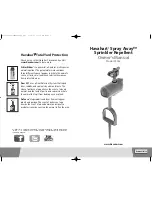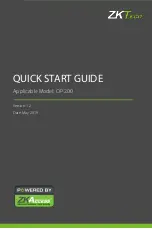
NI USB-6000 User Guide
|
© National Instruments
|
13
When using RSE connections with floating signal sources, the AMP rejects both the
common-mode noise in the signal and the ground potential difference between the signal source
and the device ground.
Refer to the NI Developer Zone document,
Field Wiring and Noise Considerations for Analog
Signals
, for more information. To access this document, go to
ni.com/info
and enter the Info
Code
rdfwn3
.
Ground-Referenced Signal Sources
A ground-referenced signal source is a signal source connected to the building system ground,
as shown in Table 5. It is already connected to a common ground point with respect to the device,
assuming that the computer is plugged into the same power system as the source. Non-isolated
outputs of instruments and devices that plug into the building power system fall into this
category.
The difference in ground potential between two instruments connected to the same building power
system is typically between 1 and 100 mV, but the difference can be much higher if power
distribution circuits are improperly connected. If a grounded signal source is incorrectly measured,
this difference can appear as measurement error. Follow the connection instructions for grounded
signal sources to eliminate this ground potential difference from the measured signal
Wiring Ground-Referenced Signal Sources
The AI channels on the NI USB-6000 share a common reference point, AI GND. This type of
AI is known as Referenced Single-Ended (RSE).
When using RSE connections with ground-referenced signal sources, there can be a potential
difference between AI GND and the ground of the sensor as shown in the bottom-rightmost cell
of Table 5. This ground loop causes measurement errors, and care must be taken to minimize
this error.
For static ground loop error, measuring the potential difference between AI GND (VB) and the
ground of the sensor (VA) prior to signal measurement and then subtracting it from the signal
measurement helps to minimize the error.
For dynamic ground loop errors, using an NI DAQ product that has differential input capability
helps to fully minimize the error.
Refer to the NI Developer Zone document,
Field Wiring and Noise Considerations for Analog
Signals
, for more information. To access this document, go to
ni.com/info
and enter the Info
Code
rdfwn3
.
AI Start Trigger
You can configure PFI 1 as the AI Start Trigger for analog input tasks. Refer to the
Using PFI 1
to Trigger an Analog Input Acquisition
section for more information.





































